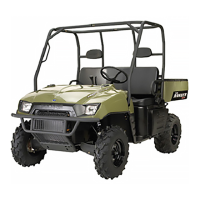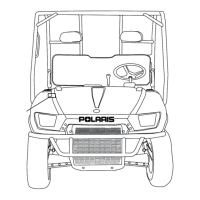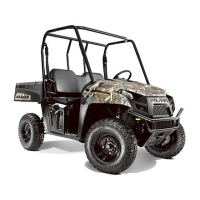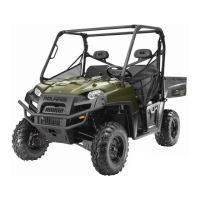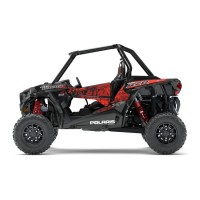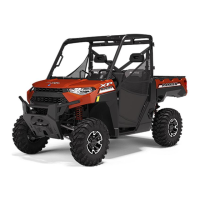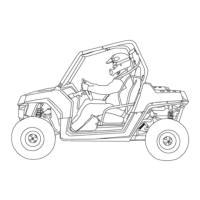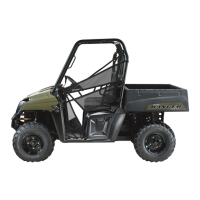2.29
MAINTENANCE
2
STEERING AND SUSPENSION
Steering
The steering components should be checked periodically for
loose fasteners, worn tie rod ends, and damage. Also check to
make sure all cotter pins are in place. If cotter pins are removed,
they must not be re-used. Always use new cotter pins.
Replace any worn or damaged steering components. Steering
should move freely through entire range of travel without
binding. Check routing of all cables, hoses, and wiring to be
sure the steering mechanism is not restricted or limited.
NOTE: Whenever steering components are
replaced, check front end alignment.
Tie Rod End / Steering Inspection
• To check for play in the tie rod end, grasp the steering
tie rod, pull in all directions feeling for movement.
• Replace any worn steering components. Steering
should move freely through entire range of travel
without binding.
• Elevate front end of machine so front wheels are off the
ground. Check for any looseness in front hub / wheel
assembly by grasping the tire firmly at top and bottom
first, and then at front and rear. Try to move the wheel
and hub by pushing inward and pulling outward.
• If abnormal movement is detected, inspect the hub and
wheel assembly to determine the cause (loose wheel
nuts or loose front hub nut).
• Refer to the Final Drive chapter for more information.
Wheel Toe Alignment Inspection
1. Place machine on a smooth level surface and set steering
wheel in a straight ahead position. Secure the steering
wheel in this position.
2. Place a chalk mark on the center line of the front tires
approximately 10” (25.4 cm) from the floor or as close to
the hub/axle center line as possible.
NOTE: It is important the height of both marks be
equally positioned to get an accurate measurement.
3. Measure the distance between the marks and record the
measurement. Call this measurement “A”.
4. Rotate the tires 180
by moving the vehicle forward.
Position chalk marks facing rearward, even with the hub/
axle center line.
5. Again measure the distance between the marks and record.
Call this measurement “B”. Subtract measurement “B”
from measurement “A”. The difference between
measurements “A” and “B” is the vehicle toe alignment.
The recommended vehicle toe tolerance is 1/8”, to 1/4”, (.3
to .6 cm) toe out. This means the measurement at the front
of the tire (A) is 1/8”, to 1/4”, (.3 to .6 cm) wider than the
measurement at the rear (B).
WARNING
Due to the critical nature of the procedures
outlined in this chapter, Polaris recommends
steering component repair and adjustment be
performed by an authorized Polaris MSD-
certified technician when replacing worn or
damaged steering parts.
Use only genuine Polaris replacement parts.
= In. / mm.
Wheel Toe-Out: (A) - (B) = 1/8 - 1/4" (.3 to .6 cm)
A
B
10”
Mark (A), measure,
then roll forward
and measure (B).
Measure Here
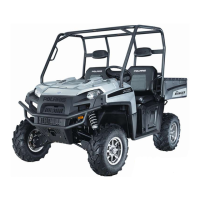
